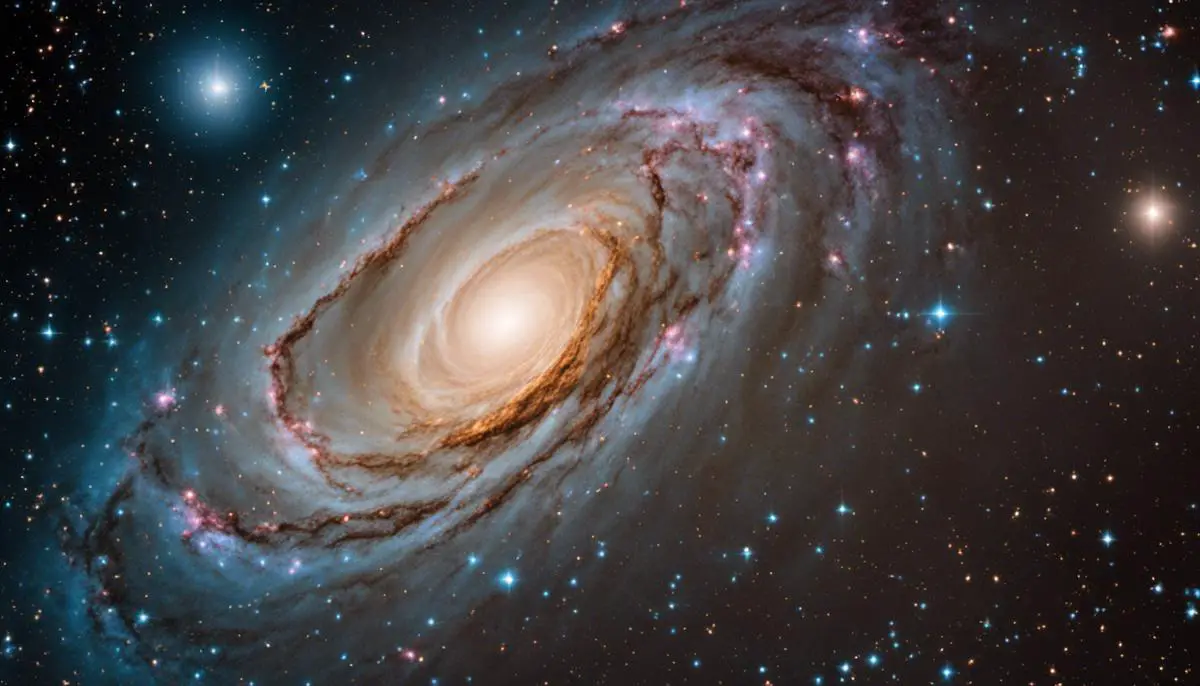Since its launch into the cosmos, the Hubble Space Telescope has captivated humanity with extraordinarily detailed and awe-inspiring images from the deep recesses of space. Journeyed far beyond our planet’s confines, the Hubble has immeasurably expanded our understanding of the universe’s vast and complex dynamics. This has spanned a myriad of topics, from the precise calculation of the Hubble Constant to ascertaining the age of the universe, insights into dark matter and dark energy, and unravelling the mysteries of galaxy formation and evolution. Additionally, its pioneering study of planetary bodies, both within our solar system and in the unknown territories of exoplanets, has illuminated our cosmic horizons.
Deciphering the Hubble Constant
Refining the Hubble Constant: A Deeper Look into the Contributions of the Hubble Space Telescope
The Hubble Space Telescope (HST), launched in 1990, is named after Edwin P. Hubble—the very man who uncovered the dynamic nature of the cosmos by establishing the relationship between galaxies’ speeds and their distances from us. This relationship, called the Hubble’s Law, manifests the concept of an expanding universe and introduces the Hubble Constant (Ho) as the rate of that expansion.
How, then, has Hubble’s space namesake, the HST, contributed to this monumental field of study? To answer that, we must look at three key areas—local distance measurements, cosmic distance ladder, and extragalactic distance scale—where the HST has provided invaluable inputs, refining our understanding of the Hubble Constant.
Initially, the value of the Hubble Constant was rather uncertain, due to imperfect distance measurements to galaxies and the innate statistical nature of these measurements. However, through the employment of the HST, such shortcomings have been challenged.
The HST took local distance measurements to a new level by using accurately determined Cepheid variables’ distances within galaxies. This method, superior to previous techniques, has significantly reduced uncertainties. Cepheids are pulsating stars, and their pulsation period directly relates to their luminosity. Gauging a Cepheid’s period allows for determining its absolute brightness, and by comparing this with the observed brightness, a precise distance is obtained. The HST used this method to determine the distances to over two dozen galaxies, reconstructed the nearby cosmic distance ladder, and hence, provided a well-calibrated measure of the Hubble Constant.
Building on local distance measurements, the Hubble Space Telescope was instrumental in developing the cosmic distance ladder, which begins with relatively nearby objects and uses them as benchmarks to measure more distant ones. Between 2009 and 2016, projects like SH0ES (Supernovae H0 for the Equation of State) were successful in using Cepheids as primary distance indicators to calibrate the absolute brightness of Type Ia supernovae—powerful cosmic yardsticks that could measure distances up to billions of light-years away.
Finally, the HST’s Wide Field Camera 3 (WFC3) has improved the extragalactic distance scale—the range over which galaxies’ distances can be measured. Employing near-infrared observations from WFC3, the HST increased the ability to accurately measure distances to galaxies hosting Type Ia supernovae, which are torchbearers in refining the Hubble Constant.
These collective efforts from Hubble Space Telescope missions have led to a current estimate of the Hubble Constant (Ho) to be around 73 km/s/Mpc (kilometers per second per megaparsec), with a remarkably reduced uncertainty of just 2.4 percent. This improved value of Ho is paramount to our understanding of the origin, structure, and ultimate fate of the universe.
The journey of nearly three decades with the Hubble Space Telescope towards refining the Hubble Constant exemplifies a persistent quest for cosmic truth—a quest in which each refined measure, despite its inherent complication, brings us closer to comprehending the depth of our expanding universe.
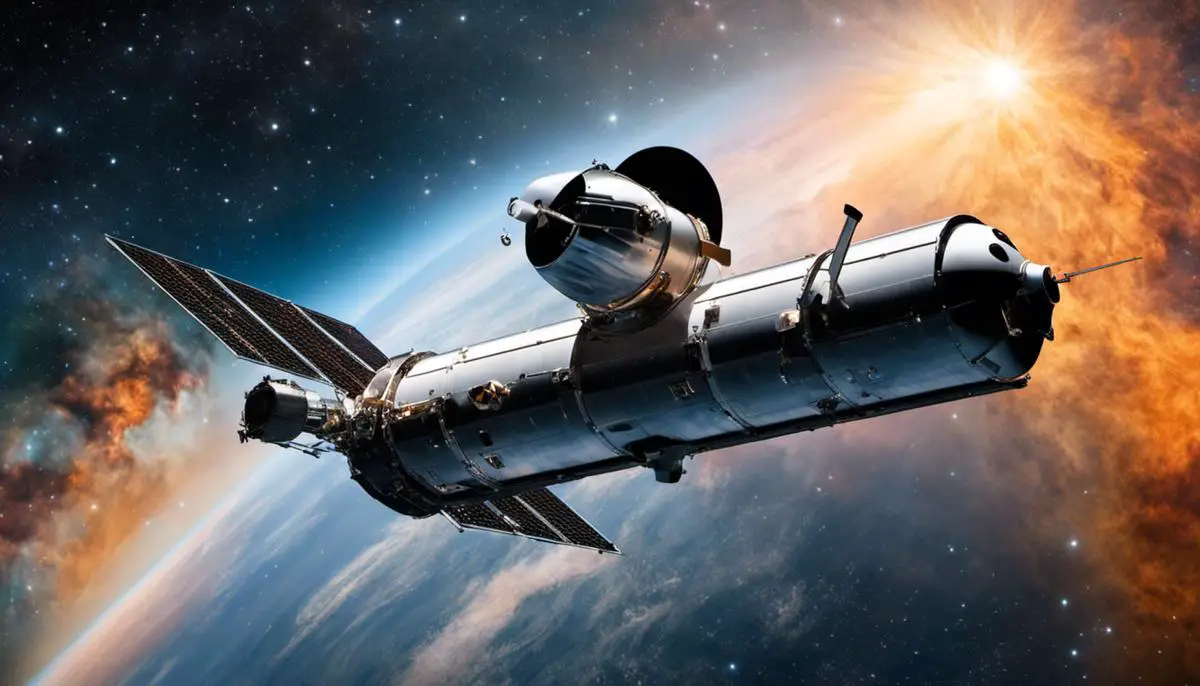
Distance Scale & Universe’s Age
In the assessment of the Hubble Telescope’s remarkable contributions, attention invariably shifts to the deciphering of the universe’s age and the establishment of a sound distance scale. The Telescope’s unmatched prowess in capturing high-resolution images, coupled with its unobstructed view of the universe from the realm beyond the Earth’s atmosphere, has conferred upon the scientific community a highly enhanced understanding of the celestial expanses.
A mention of the Hubble Space Telescope and its role in determining the universe’s age remains incomplete without reference to its pursuit of ancient white dwarf stars in our own Milky Way galaxy. The process involves spotting and assessing the coolest and dimmest of these stars, which, in turn, can yield accurate data regarding the universe’s age due to their status as the oldest known celestial bodies. The age of these antique stars, calculated to be about 12 to 14 billion years old, establishes in broad strokes the minimum age of our universe.
To further refine this estimate, the Hubble Telescope has made significant strides in measuring and analyzing globular clusters—dense, spherical collections of ancient stars orbiting a galactic core. The ages calculated from the oldest of these clusters provide some of the most reliable estimates for the universe’s age, further supporting the claim that the universe is approximately 13.8 billion years old.
The Hubble Space Telescope’s role extends beyond the age of the universe to include pioneering strides in establishing an effective cosmic distance scale. Differential Cepheid variables—stars that pulse at a rate relating directly to their luminosity—serve as a reliable galactic yardstick. By measuring Cepheids in both near and far galaxies and comparing their absolute and relative luminosities, the Hubble Telescope has helped to establish a more precise scale of intergalactic distances.
Additionally, the measurement of light from Type Ia supernovae provided by the Hubble Telescope provided confirmation for the extragalactic distance scale. These supernovae, often referred to as “standard candles,” have a known luminosity that allows astronomers to determine their distances. The Hubble Telescope’s ability to measure these supernovae in distant galaxies has helped confirm the scale of these vast expanses.
Furthermore, the Hubble Telescope pioneered in the measurements for the rate of universe expansion termed as the ‘Hubble Constant‘. The recent data suggest some discrepancies between estimates obtained from different methods, prompting what is now termed the ‘Hubble tension‘. Resolving this tension requires either innovative, accurate methods or a wholly new framework of Physics, adding to the intrigue and eventual excitement to this pursuit.
The accumulated knowledge and the improvements in accuracy, courtesy of the dedicated labor by the Hubble Space telescope over its triumphant operational history, have enabled refinements in vast aspects of cosmological understanding. By presenting a precise age and distance scale, the Hubble Telescope has undeniably brought us palpably closer to unraveling the mysteries that our universe holds. Undoubtedly, the ongoing journey promises further revolutions in our quest for knowledge and, ultimately, our place in the universe.
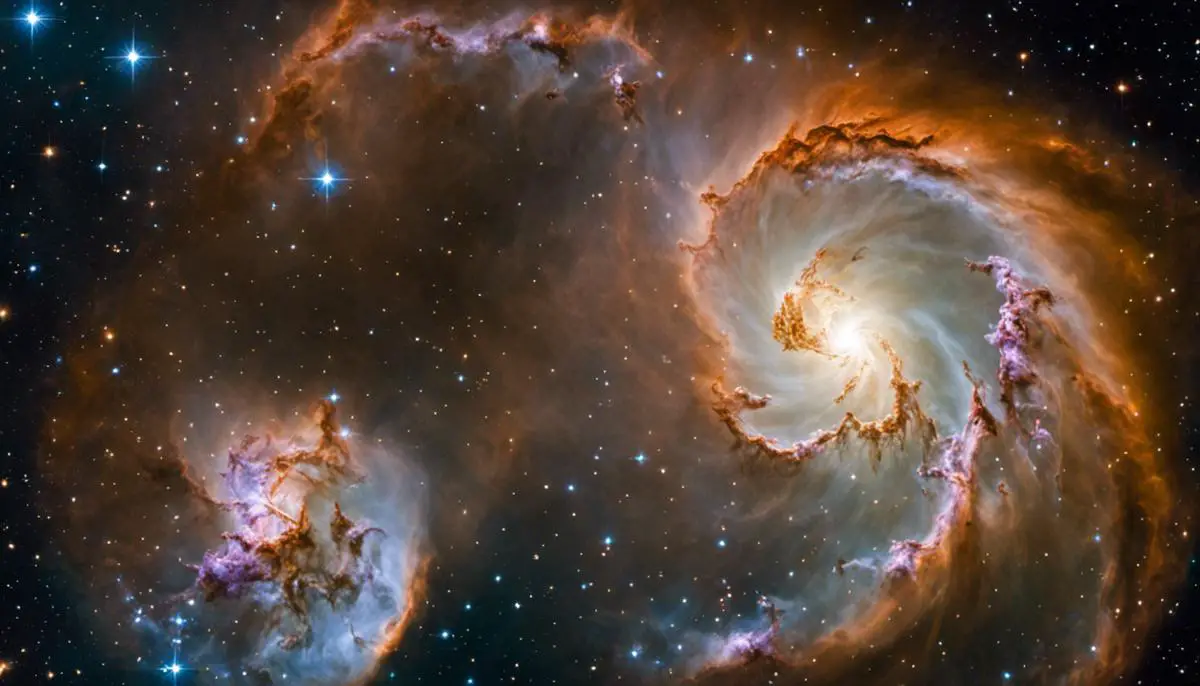
Galaxy Formation & Evolution
Transitioning now from the determination of the Hubble Constant, we delve into the Hubble Space Telescope’s instrumental role in accurately estimating the age of our universe, a daunting task that has bewildered astronomers for decades. Crucially, the HST is pivotal in enabling us to observe and characterize ancient white dwarf stars within our galaxy. These venerable celestial bodies, being some of the oldest surviving remnants of star formation, hold invaluable secrets to galactic evolution.
White dwarfs, being the evolutionary endpoint for stars that are not massive enough to supernova, captivate the scientist’s curiosity for they encapsulate the aging process of stars. With improved accuracy afforded by the HST, these stellar remnants have been employed as cosmic timekeepers, their cooling rate charting timescales spanning billions of years.
Drawing further from our celestial archives, globular clusters have offered an additional means to refine estimates of the universe’s age. These clusters, collected in granulated spherical formations of ancient stars, provide another cosmic chronometer. The brightest of these stars, in their advanced stages of evolution, have been depicted with an unprecedented clarity by the HST, allowing us an insight into their intrinsic luminosity and hence, their ages.
The establishment of a cosmic distance scale was another colossal objective HST sought to achieve. This undertaking bets on the reliable assumption that the laws of physics underpinning the generation of light by celestial bodies are indeed universal. Observing a diverse range of galaxies, the HST has offered groundbreaking clarity and resolution, enabling us to analyze light from distant celestial phenomena.
Significantly, an examination of Type Ia supernovae has fortified confirmation of this distance scale, these spectacular cosmic fireworks being detectable across vast intergalactic distances. The brightness of these supernovae, remarkably consistent across observed instances, affirms them as standard candles, allowing their observed brightness to indicate their distance from us.
It is in comprehending these distances, and the speeds at which galaxies are receding, that the Hubble Telescope has been instrumental in measurement of the universe’s rate of expansion. Through these calculations, we are edging closer to determining the age of our universe and discovering potential discrepancies that indeed pose challenges for cosmology.
The influence of the HST is far-reaching, extending beyond the purely scientific sphere to impact on our fundamental understanding of our place in the cosmos. Its ground-breaking observations have revolutionized astronomy and cosmology, and its contributions will continue to shape our comprehension of the universe in incalculable ways. The Hubble Space Telescope remains a testament to the limitless potential of human curiosity and our ceaseless pursuit of knowledge. As we continue to unravel these cosmic mysteries, the sky is not the limit, but just the beginning.
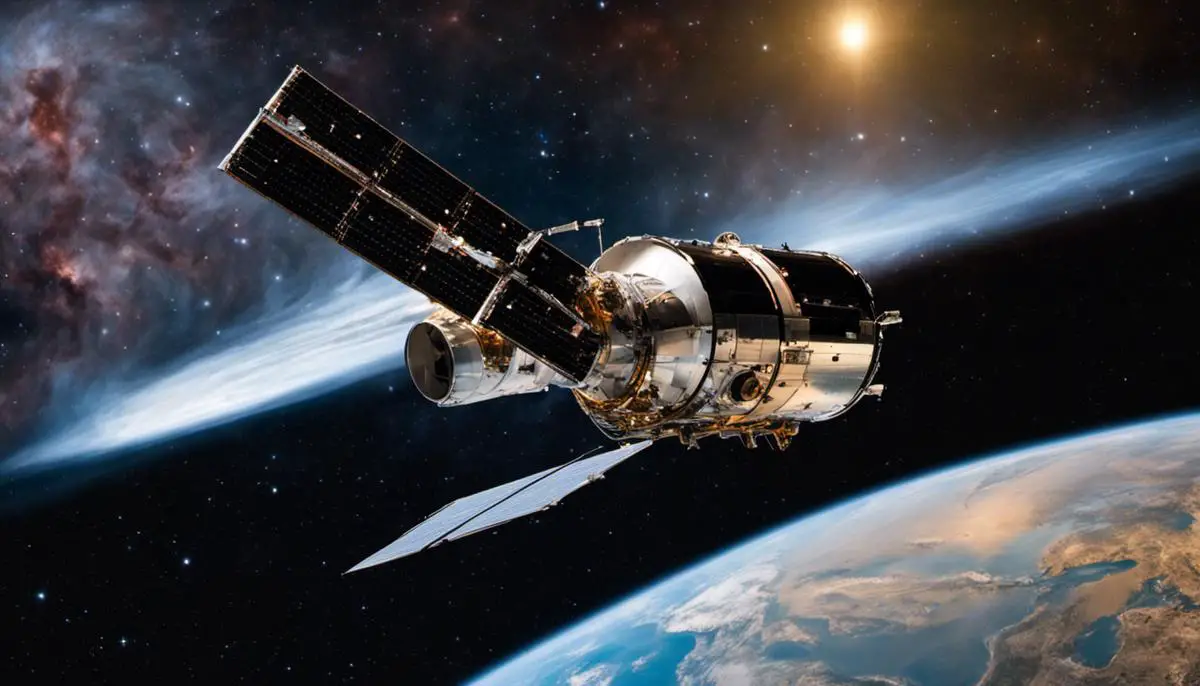
Dark Matter & Dark Energy
Having established the enormous contributions of the Hubble Space Telescope to modern astrophysics, it is important to delve into its role in unravelling the enigmatic concepts of dark matter and dark energy. These two cosmic constituents, though invisible to telescopes, are believed to account for approximately 95% of the universe’s total mass-energy content. It is here that the Hubble’s ingenuity and its unrivalled precision have significantly advanced our understanding.
Dark Matter – the elusive “missing mass” of the universe, was first posited due to gravitational anomalies observed within galaxies. The velocity of celestial bodies orbiting a galaxy could not be accounted for by the observable matter alone, suggesting the presence of additional unseen mass, therefore named dark matter.
The Hubble Telescope has played a central role in supporting the existence of dark matter. Its keen observations of gravitational lensing, a phenomenon where light from a distant galaxy is warped by the gravitational influence of a foreground galaxy, has offered a method to deduce the presence of dark matter. Hubble’s detailed imaging allows for complex models of dark matter distribution, lending significant credibility to its existence, despite it remaining physically undetectable.
Dark Energy – another elusive cosmic entity, has leveraged the Hubble’s prowess in its discovery and further understanding. In the late 1990s, observatory data suggested that the universe’s expansion is not slowing down due to gravitational forces, as one would expect, but instead is accelerating. This led to the hypothesis of a mysterious force opposing gravity, now known as dark energy.
Through its successor to the WFC3, the Advanced Camera for Surveys (ACS), the Hubble has aided in quantifying this acceleration by observing distant Type Ia supernovae. By comparing their apparent brightness with their known intrinsic brightness, a more precise measurement of the universe’s rate of expansion, and thus the influence of dark energy, is discernible.
Hubble’s observations also contribute towards the phenomenon’s most perplexing aspect – its constancy. Astrophysical models dictate that the density of dark energy should decrease as the universe expands. However, Hubble data suggests the density remained constant – a finding that upended our understanding of physics.
Overall, the Hubble Space Telescope’s contributions toward our understanding of dark energy and dark matter underscore its importance in cosmology. Through detailed imaging, keen observations, and unrivalled precision, it has illuminated these mysterious unknowns, shaping a new era in our understanding of the universe. The Hubble continues to broaden the frontiers of our cosmic knowledge, demonstrating that while there is much we do not know, there is also much to unearth in this magnificent cosmos.
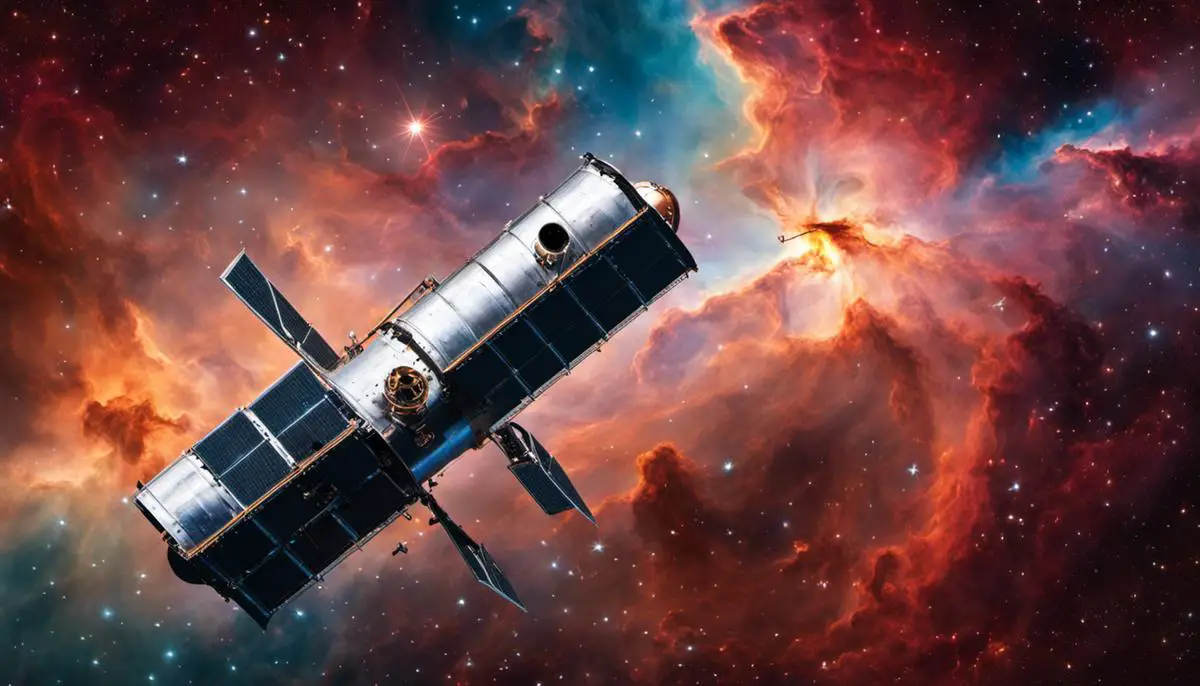
Planetary Discoveries & Exoplanets
Shifting the focus to exoplanets and their observation, it is undeniable that the Hubble Space Telescope (HST) has made significant strides forward in this burgeoning field. Eminently, it captured the first ever image of an exoplanet around the star Fomalhaut, which orbits at roughly the equivalent distance of Saturn to the Sun. This was significant not just for the image itself, but for the verification of the existence of such exoplanets alongside the HST’s already proven efficacy in detecting exoplanets via the transit method.
One of the most significant achievements came with Hubble’s observations of the TRAPPIST-1 system. These observations illuminated the discovery of seven Earth-sized planets orbiting a single star – three of which reside in the host star’s habitable zone. This data, when taken in conjunction with spectroscopic analysis of the star and planets’ atmospheres, allowed scientists to make informed determinations about the planets’ potential for habitability.
Further contributions made by the Hubble Space Telescope directly relate to the observation and understanding of exoplanet atmospheres. These observations led to the detection of crucial gases like sodium, hydrogen, and helium. Moreover, the telescope has been central in detecting the presence of water vapor in the atmospheres of exoplanets. This implies the possibility of conditions that may not be too alien from what we experience here on Earth, contributing to the search for Earth-like, potentially habitable, planets.
These advances do not occur in a vacuum. Underpinning this, Hubble, in conjunction with Kepler data, revealed the presence of clear skies and steamy water vapor in the atmosphere of a Neptune-sized planet named HAT P-11b. This is the smallest planet for which the presence of atmospheric water has been detected, a feat only made possible by the nimble observation units embedded in the Hubble, effectively working in harmony with Kepler.
On a more cosmic scale, the Hubble’s observations on the planet WASP-12b provided crucial insights into how a planet can be devoured by its parent star. Hubble’s observations revealed a planet so close to its parent star that it is super-heated and ripped apart, its material trailing like a comet’s tail. This stunning visual narrative provided a rare glimpse into the often calamitous lives of planets, all made possible by the Hubble’s exquisite capturing capabilities.
In conclusion, the legacy of the Hubble Space Telescope and its role in the discovery and observation of exoplanets is invaluable. From confirming the existence of exoplanets, to illuminating characteristics of their atmospheres and their potential for habitability, to even documenting their perilous lives on occasion, the Hubble continues to further our understanding of the cosmos and our place within it. This testament to human curiosity and innovation remains pivotal to unveiling new corners of the universe and the search for life beyond Earth.
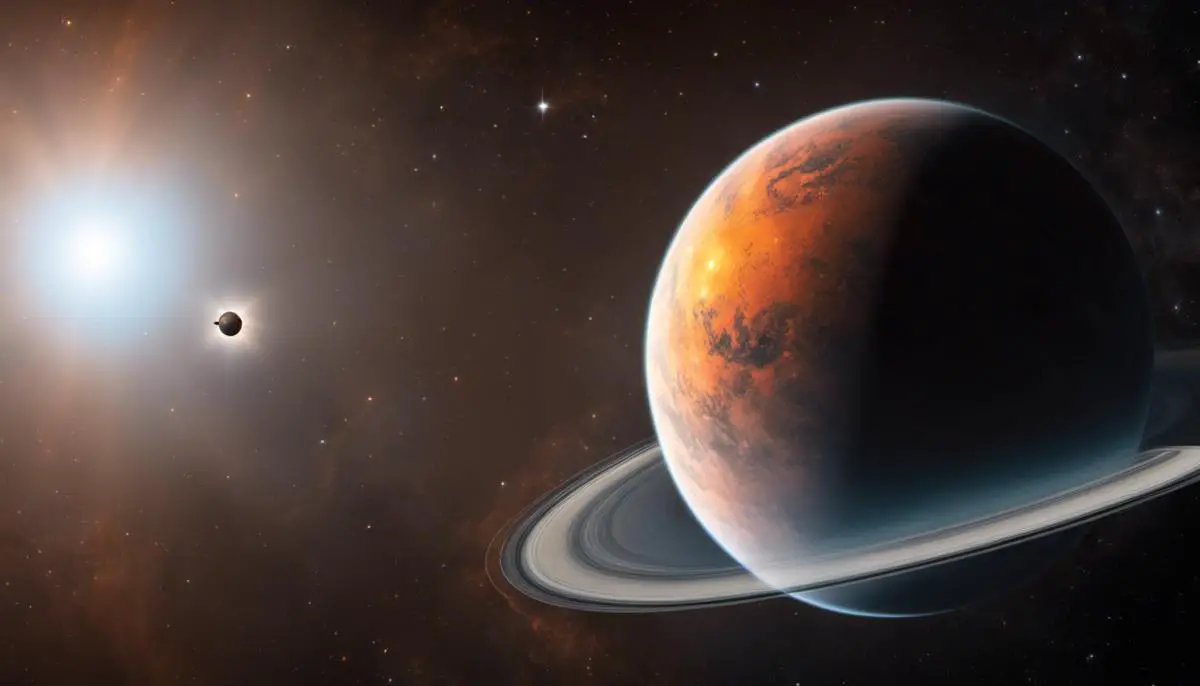
As we continue to advance toward the unknown, the Hubble Space Telescope remains our unwavering guide in the boundless sea of cosmos. Each new observation, image, and discovery push the brink of our cosmic understanding, it challenges our perspective, and awakens us to the majestic grandeur of the universe we inhabit. Through its inestimable contributions, the Hubble has not only catapulted our knowledge of the celestial realm but has irrevocably altered our perception of our place within it. The Hubble’s journey and its discoveries thus represent our collective human endeavor – an unending quest to comprehend the cosmos, and to seek our place within its enigmatic vastness.
![]()
